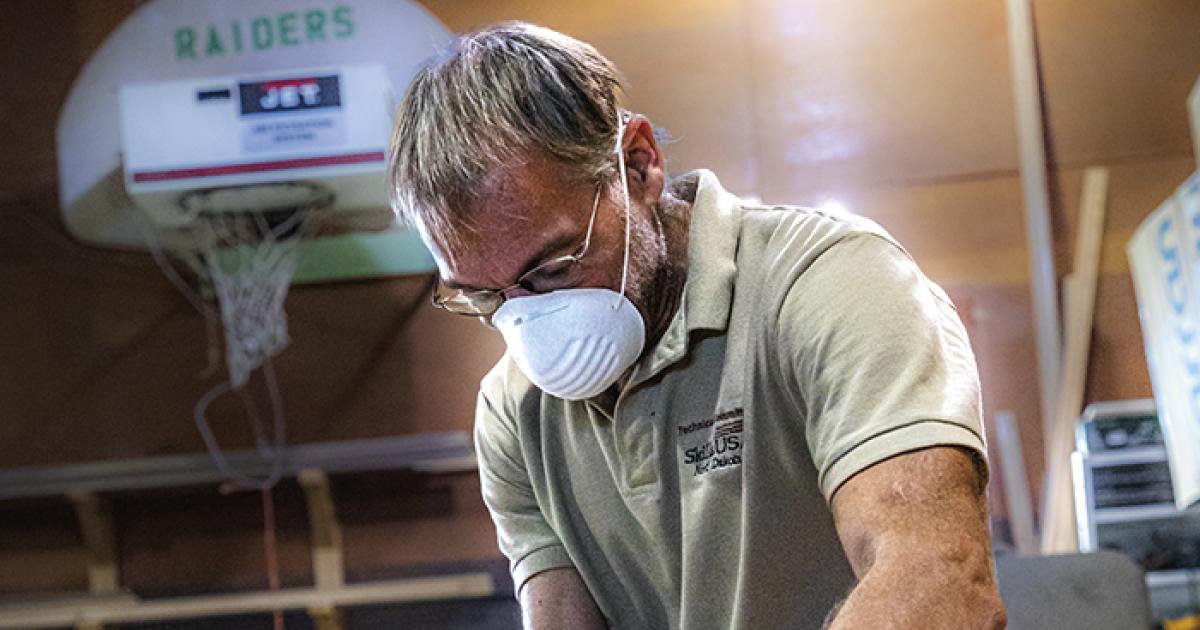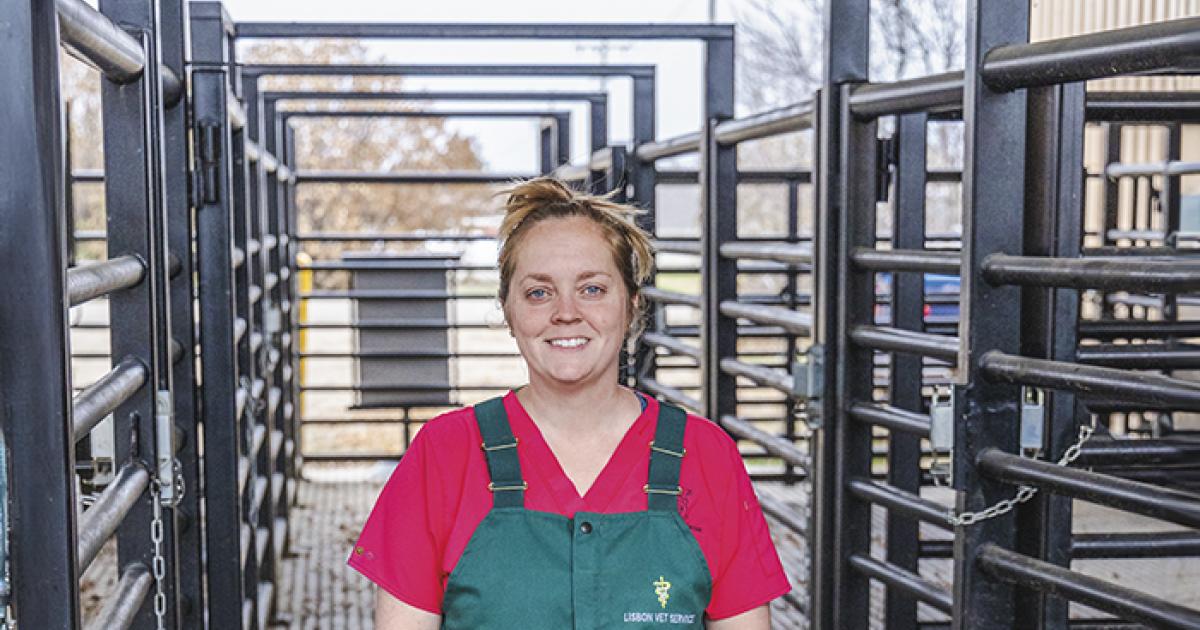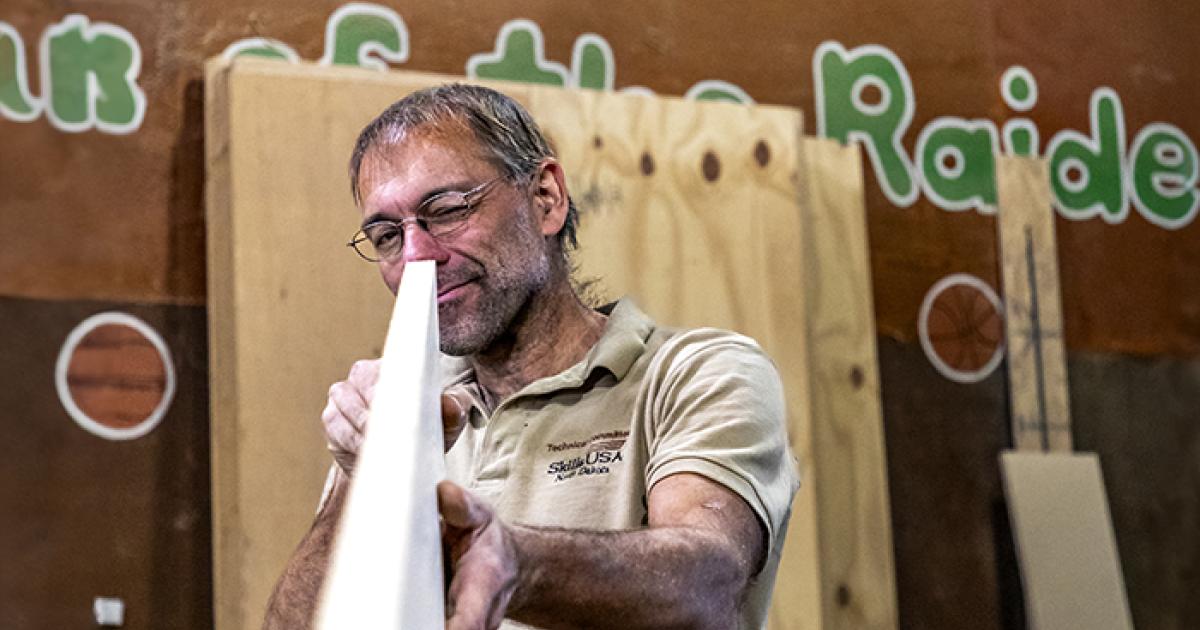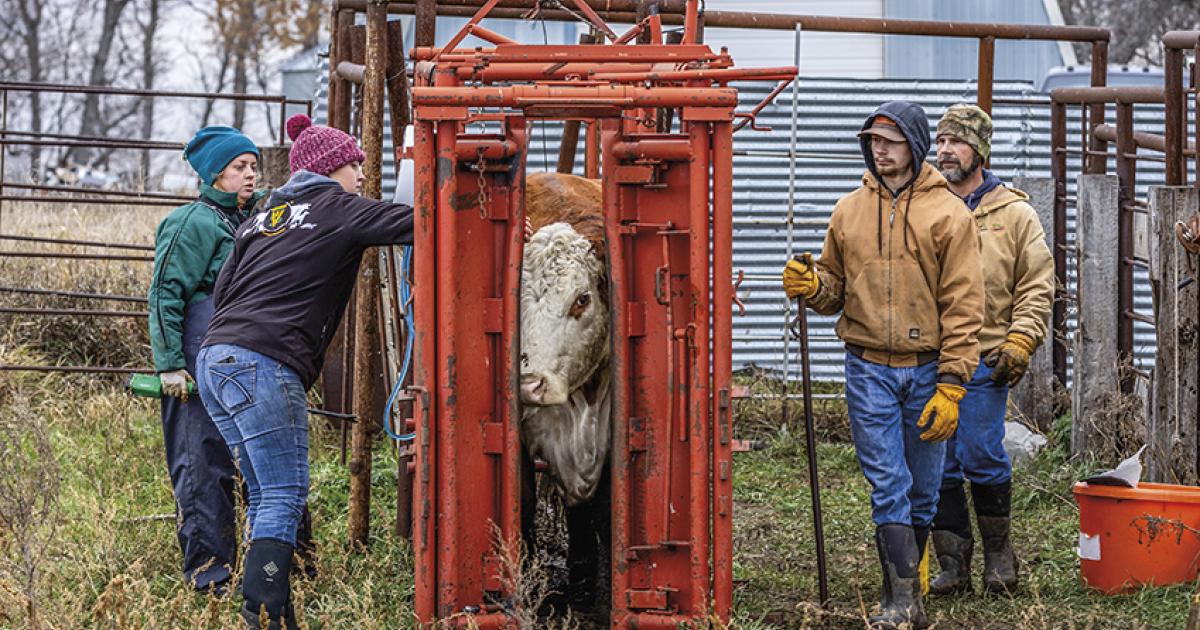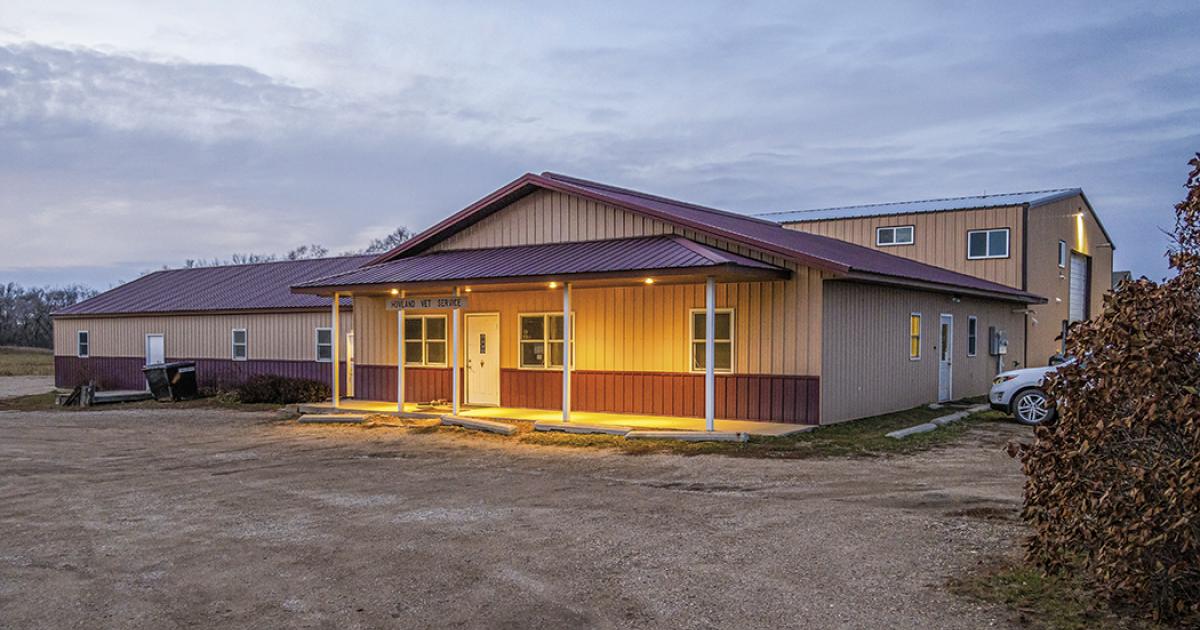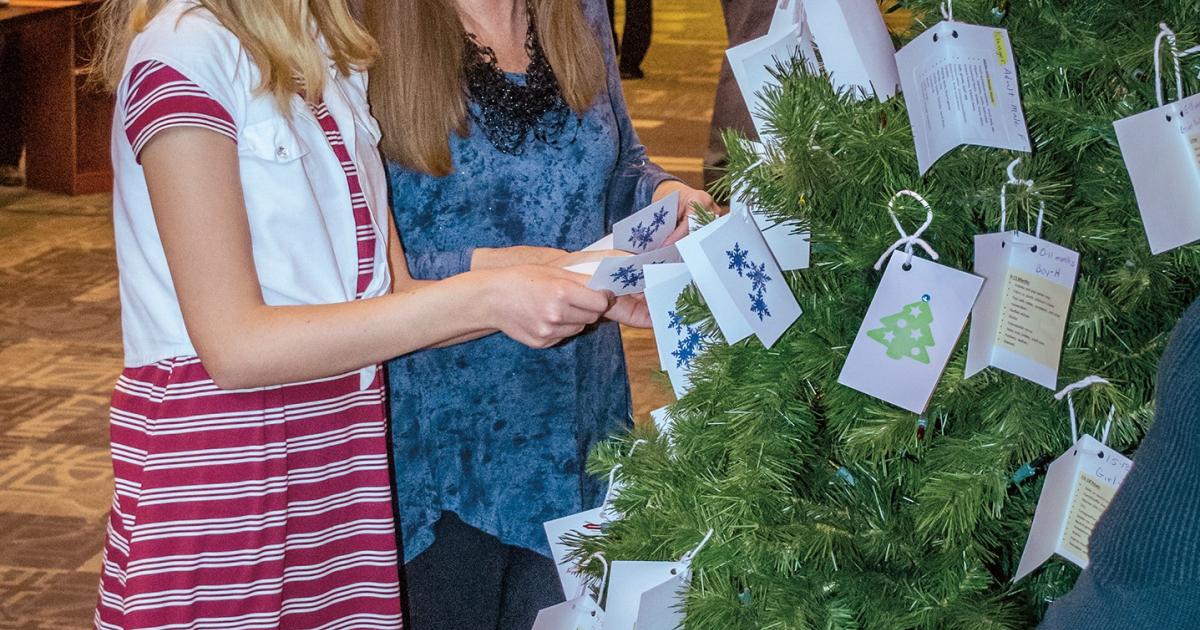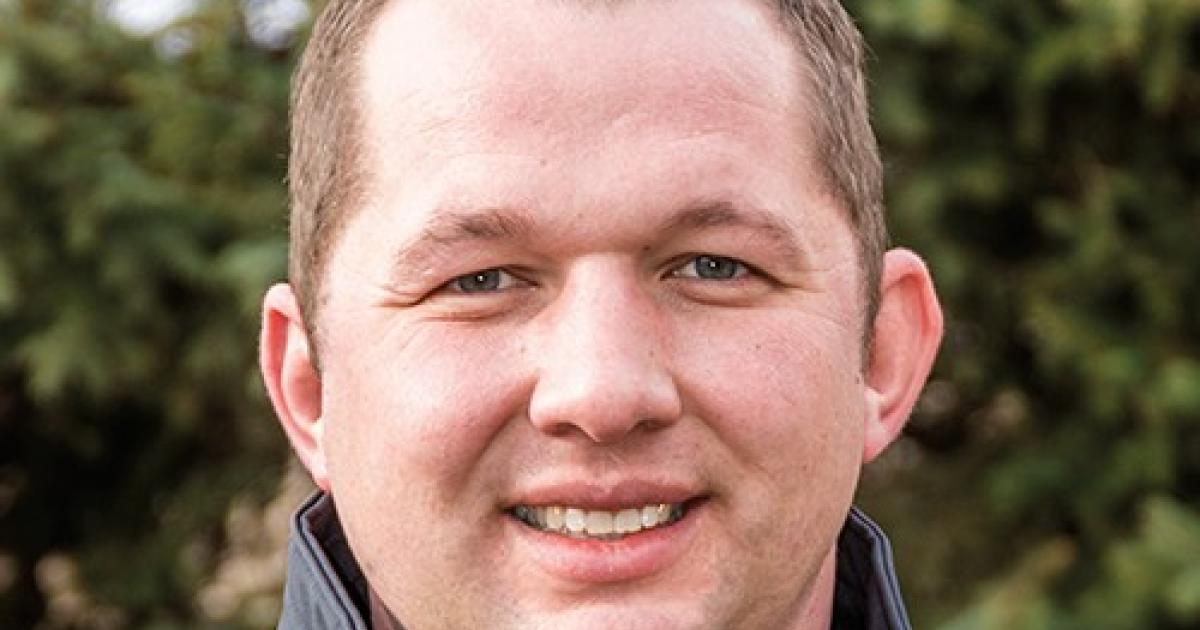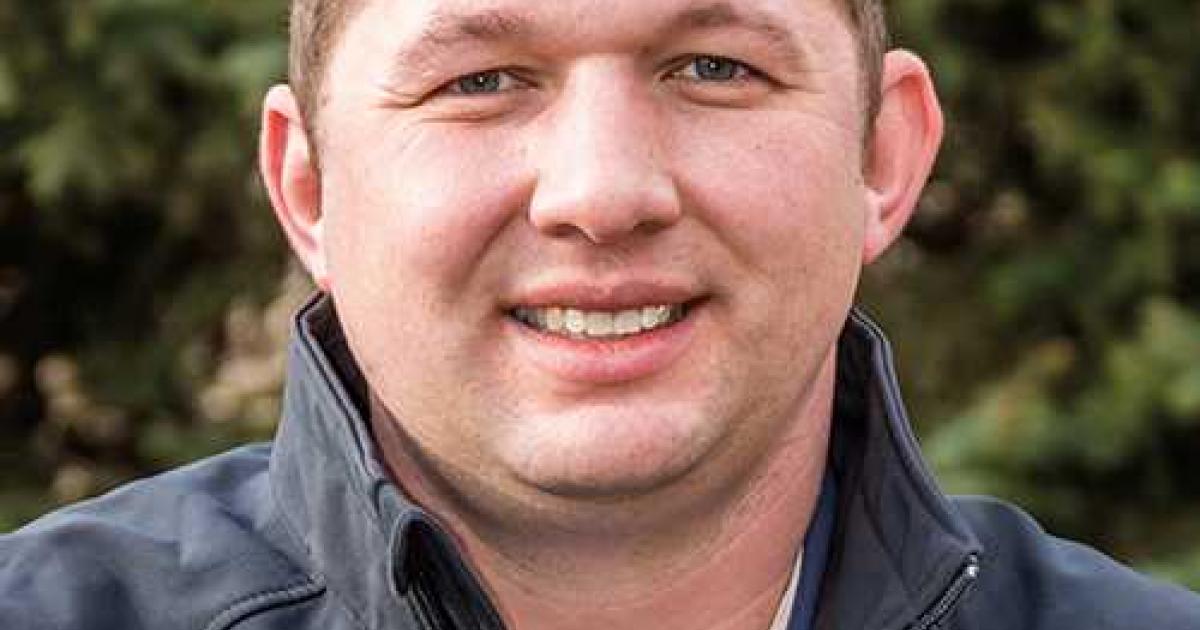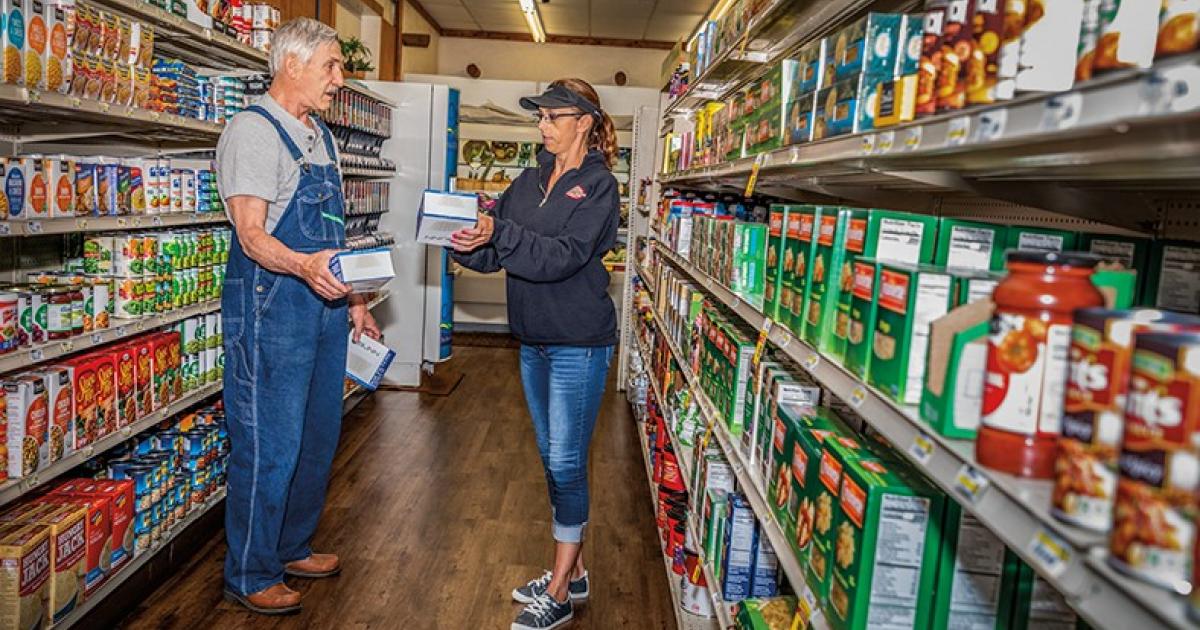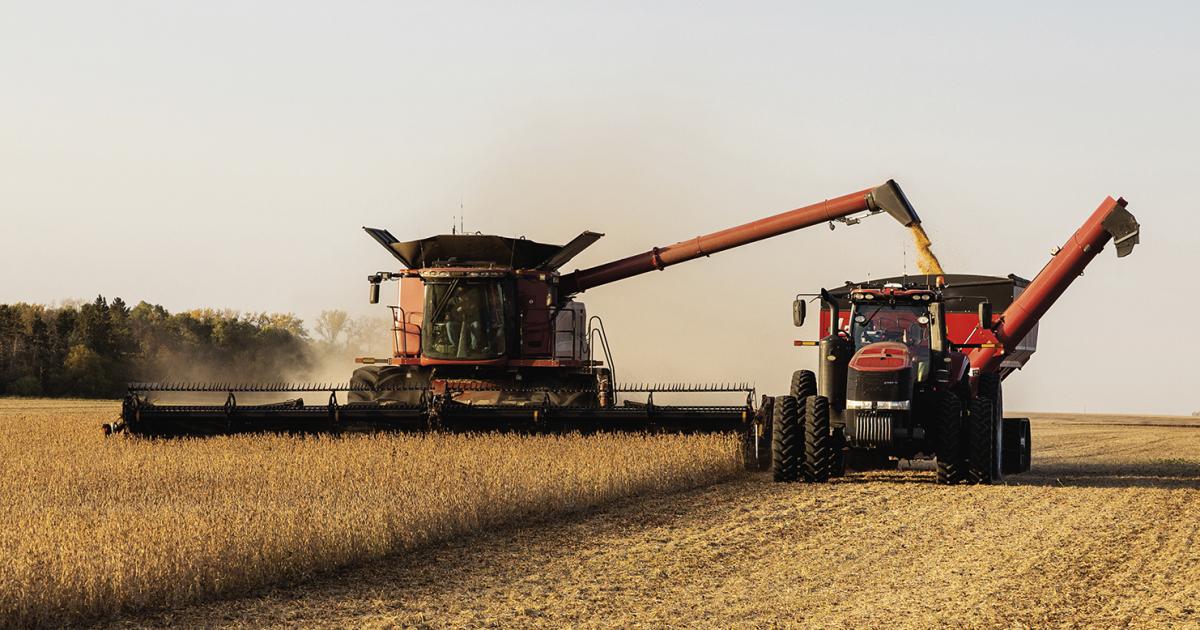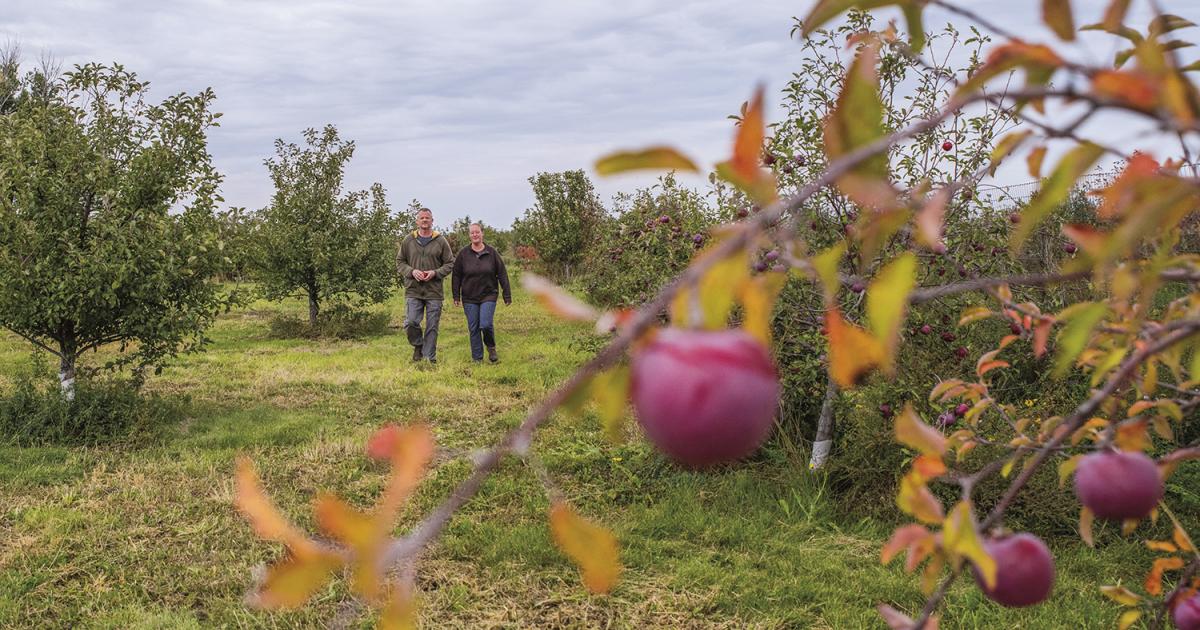USDA grant program provides opportunities for small business owners, ag producers
In 2004, Jamie Zins transformed this gym – where he played basketball as a child – into a woodworking shop. The craftsman’s tools are powered by solar energy, thanks in part to a $10,000 grant provided through the U.S. Department of Agriculture’s Rural Energy for America Program. Photo by NDAREC/Liza Kessel
Reduce, reuse, recycle. It’s a public awareness campaign every ‘90s kids will remember. But for Jamie Zins, it’s more than a slogan: It’s a way of life.
His resourceful nature is on full display in McKenzie, where he’s given new life to the former school building. Years ago, 207 A Street is where Jamie Zins learned his ABCs and 123s. Today, the former schoolhouse is the home of his business, Jamie Zins Woodworking.
“(The old gym) is open enough for me to place my tools on one end and a work area on another. (The stage) is a nice spot for my heating system. There’s a lunchroom in the basement, which I use for tools and storage,” Zins says.
The gym floor is covered in sawdust, but look closely, and you’ll see the markings of the McKenzie Raiders’ basketball court. On the walls hang a basketball hoop and a blue scoreboard. A stage – once the setting of schoolchildren’s Christmas performances – holds the coal and wood-burning stoves that heat the building.
“When it was really cold outside, we got to play in here for recess. There was one time, I think I was in fourth or fifth grade, and we were playing basketball. I shot the ball from half court and sunk it. Everyone was all worked up. And then, I did it again. I didn't dare try it a third time,” Zins recalls with a laugh.
In 2004, Zins set up shop in the former school building. Nearly two decades later, a television ad inspired him to change the way he powers his operation.
“I was up one night watching TV, and they had an ad on for solar panels. So, I decided to check into it,” he says.
Zins consulted with a local solar installation company, which helped him choose a solar system and pursue tax credits and a federal grant. The grant, which is offered through the U.S. Department of Agriculture’s (USDA) Rural Energy for America Program (REAP), provides guaranteed loan financing and grant funding to rural small businesses and agricultural producers for renewable energy systems or energy efficiency improvements.
“It was a $40,000 project, and the grant was about 25%. So, that's $10,000 I basically capitalized on for the grant. The tax credit was another $10,000. So, at the end of the day, I paid half price for it,” Zins says.
Installed in 2022, the 36-panel solar system provides the electricity he needs to light his shop and power his tools. Any extra energy generated is sent to the electrical grid, and Zins receives credit from his electric provider to offset his energy bill. This summer, he used less energy than he generated, and he had bill credits moving into the fall months.
“Thousands of people, thousands of small businesses, thousands of farmers are eligible for this program. We want to help them access those resources,” says Erin Oban, North Dakota state director for USDA Rural Development. “We can assist with covering the costs of anything that will reduce your energy consumption or help you install a renewable energy system as a farmer, rancher or rural small business owner. So, if you install a solar array, geothermal system, anything that uses renewable as your source, and you can show that you will reduce your energy consumption, you may be eligible for this program. Ultimately, the goal is to help folks in rural areas keep more money in their pockets.”
LISBON VETERINARY SERVICE
East of McKenzie 165 miles, a new geothermal heating and cooling system has proven invaluable for the Lisbon Veterinary Service. One of three locations, the Lisbon clinic recently completed a 10,000-square-foot addition, which includes a new large animal hospital.
“Prior to our expansion, every call had to be done on the farm or in the parking lot. (The new addition) allows us to take in cattle, horses, sheep and goats. It's heated and cooled, and the lights are perfect – very bright. And, smaller producers don't need to invest in upgrading their facilities, which can be quite costly. They can just bring their animals in on a trailer. We can hold quite a few in the back, which has been very nice,” says Dr. Andrea Sand, Lisbon Veterinary Service owner and veterinarian.
The large animal hospital also includes a surgical room for large animals, an isolation room for sick calves, two portable hydraulic chutes and a tilt table, which makes it easier for staff to work on the feet of large animals. But perhaps the best investment is the geothermal heating and cooling system. Andrea and her husband, Michael, wanted to make veterinary care more comfortable for both animal and human.
“(Our employees) have the doors open, and they have 10 or 15 or 20 cattle in here all the time. Without air conditioning, the building could easily be 100 degrees in the summer,” Michael says. “I don’t think traditional HVAC would have lasted very long. It would have been cost-prohibitive, and my wife would have shut off the air conditioner, because we would have been getting huge air-conditioning bills.”
The cost to install a geothermal heating and cooling system was significant, but with the help of a 25% REAP grant and renewable energy rebates, they were able to make it a reality. This past July, the clinic paid a mere $59 to cool the 12,000-square-foot facility with geothermal air conditioning. In January, the cost to heat the building was $382, a bargain for a large facility where garage doors are opened several times a day.
“We turn it to 70 degrees in the barn, and we don’t even worry about it,” Michael says.
Comfortable temperatures make it easier for staff to provide safe, quality care for large animals.
“It takes away the weather component for horses,” Andrea explains. “After a certain point, it's not safe to sedate an equine patient, because they're a large animal and they can't control their temperature. Inside the barn, it’s always pretty nice. So, it takes away a lot of the environmental components and makes us more of a year-round facility, instead of seasonal.”
While the new addition provides a safe and warm place for large animal veterinary care, farm calls are still a big part of the clinic’s practice.
Levi Ketterling owns a 50-head commercial cattle operation near LaMoure. Andrea and her team provide care for his cattle, as well as his family’s dogs and cats. In the event of an animal emergency, Lisbon Veterinary Service is his first call.
“I can call them 24 hours a day and someone answers the phone. And you'd be surprised how many times in the middle of the night you need to ask a question or you need help. If we didn't have a local vet, we would lose a lot of animals,” Ketterling says. “I had a cow before with a deformed calf, and there is no way she could have delivered that calf on her own. We had to do a C-section. We saved the cow, and she healed and recovered.”
Lisbon Veterinary Service is committed to serving southeastern North Dakota, and it accomplishes this in more ways than one. In addition to providing care for large and small animals, the clinic provides quality jobs and internship opportunities for students pursuing careers as veterinarians or veterinary technicians. While most of their interns come from North Dakota, they’ve also welcomed students from as far away as Germany and China.
“The best way to find new hires is through the students. When I purchased the clinic, it employed five people throughout the three offices. We’re up to 14 people now, and the only people from Lisbon are myself and our receptionist in Oakes. So, we brought every single one of them into the community,” Andrea says. “It's also been nice bringing clients into the community, because they stop and get gas or lunch or groceries while we're working on things.”
A DIVERSE PROGRAM
Solar and geothermal systems are only two examples of projects eligible for REAP grant funding. Funds can be used for a diverse variety of energy efficiency improvements.
“There are farmers all over the state who have utilized this program to install more energy efficient grain dryers, and those savings can be significant,” Oban says. “We have small businesses that have updated their lighting to LED with huge savings, and a number of rural grocery stores have used it to upgrade their refrigeration equipment, allowing them to reduce energy costs and save a little bit more money in their operation.”
Now is a great time for ag producers and rural small businesses to pursue energy efficiency and renewable energy projects. A key priority of the Biden administration passed by Congress in 2022, the Inflation Reduction Act provided more than $145 million in funding for REAP grants, increasing the available grant amount from 25% to 50% of total eligible project costs.
“While yes, these investments absolutely contribute to a national goal of reducing carbon emissions and responding to the impacts of climate change, I think the most appealing, practical aspect is you can find ways to save energy, reduce your overhead costs and keep more money in your pocket,” Oban says. “North Dakotans are some of the best conservationists. It's who we are. And as long as these federal resources are available, we want to get them in the hands of North Dakotans.”
___
Krista Rausch is a communications specialist for the North Dakota Association of Rural Electric Cooperatives. She can be reached at krausch@ndarec.com.
For more information on available grant and loan opportunities, contact USDA Rural Development North Dakota: Grady Borth, grady.borth@usda.gov, 701-530-2047
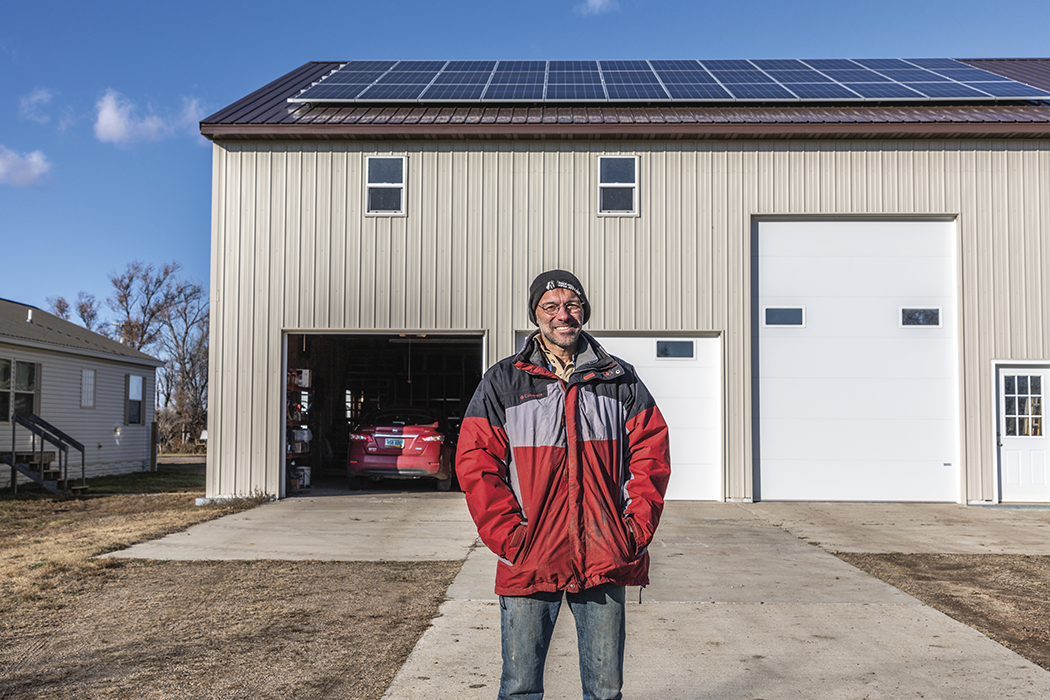
CONNECTING TO THE GRID? TELL YOUR CO-OP
Electric cooperatives are responsible for maintaining a safe, reliable electric grid to power the lives of the members they serve. As an increasing number of consumers install grid-connected distributed generation systems, such as solar panels, electric cooperatives are prepared to assist their members while maintaining the safety of the grid.
Distributed generation systems must be able to properly disconnect from the electric grid to ensure lineworkers are not injured or electrocuted when making repairs or restoring power. For example, a solar panel pumping energy onto the grid, while lineworkers are restoring power down the line, could potentially put the safety of those lineworkers at risk.
Unlike investor-owned utilities, electric cooperatives are member-owned, democratically controlled, not-for-profit utilities that set their own policies, including policies for member-owned distributed generation systems. Members considering a distributed generation system should contact their local electric cooperative to learn their local co-op’s policy. Many co-ops also have energy experts on staff who can help you with renewable energy projects.


